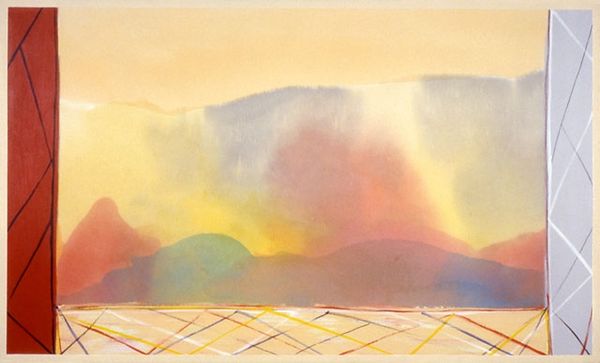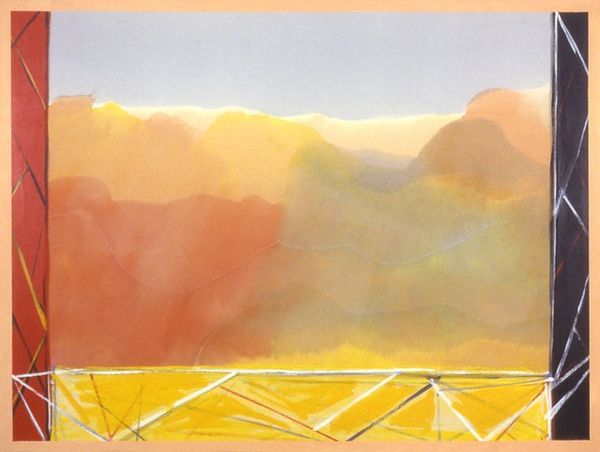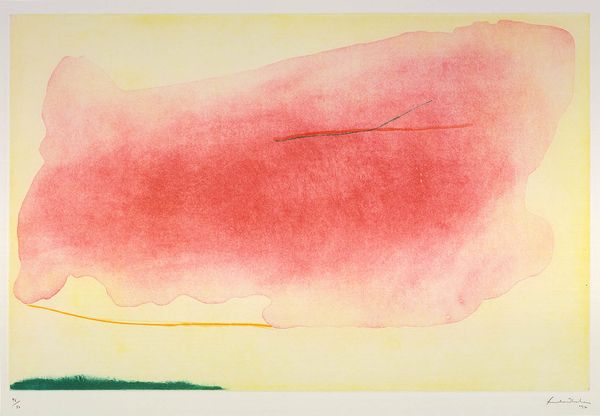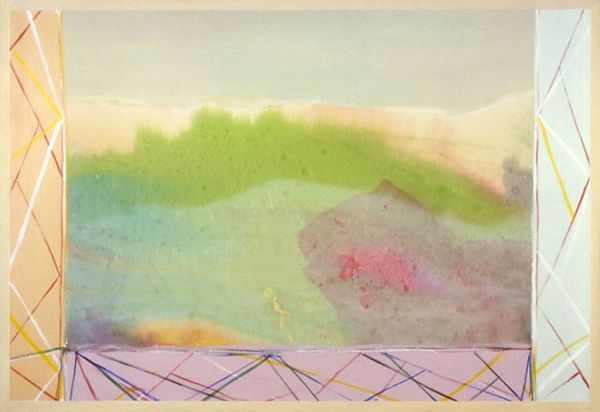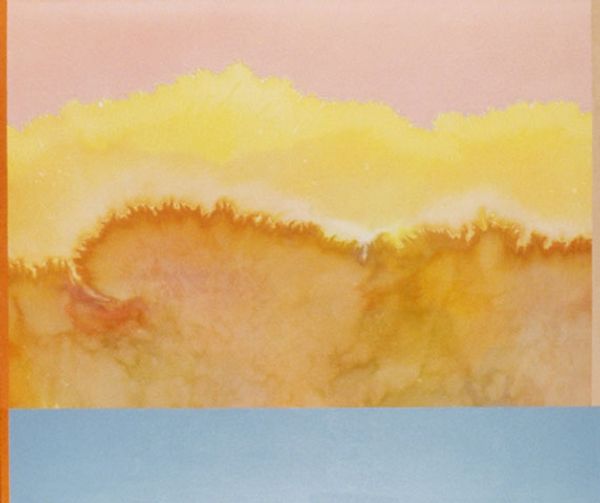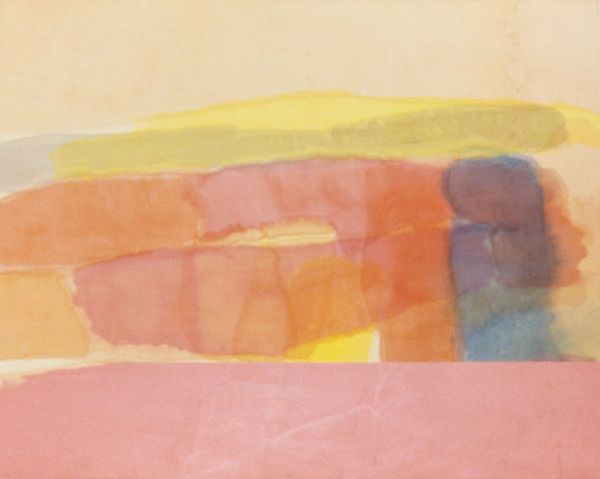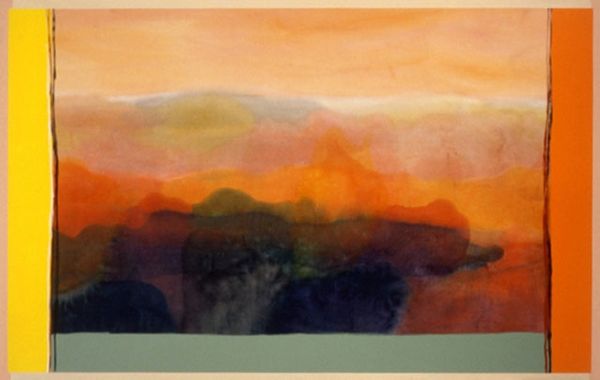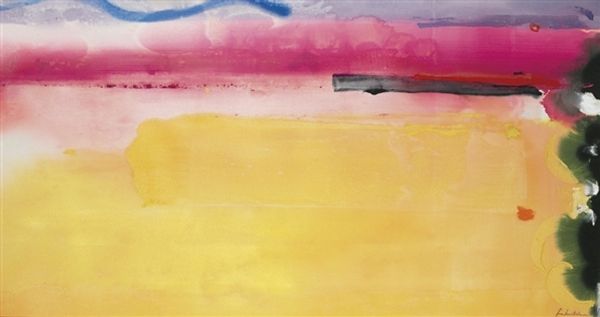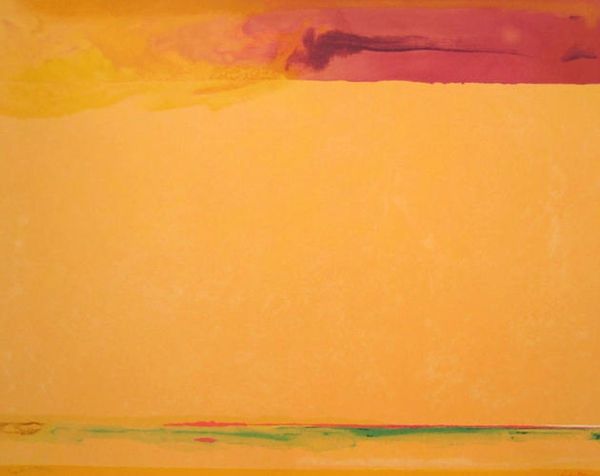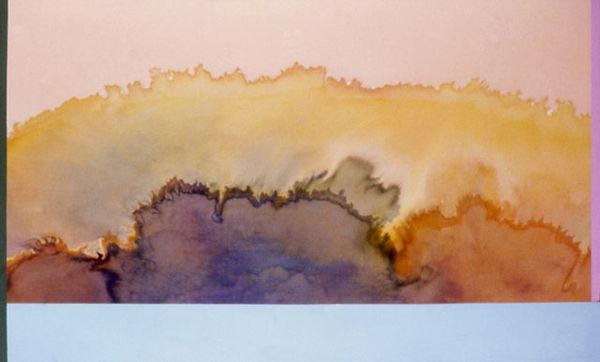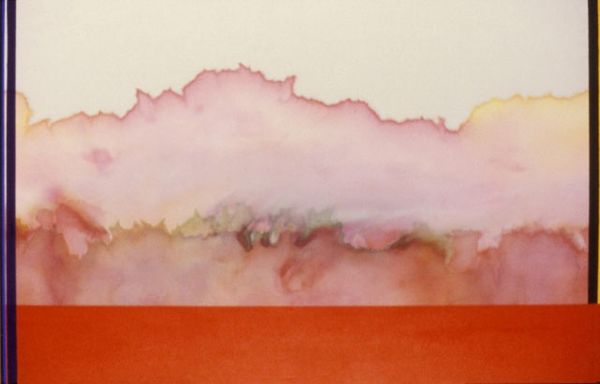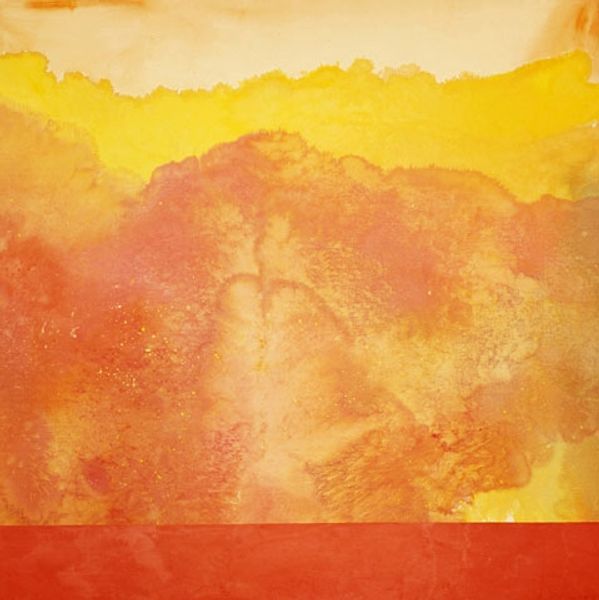
painting, watercolor
#
abstract painting
#
painting
#
landscape
#
watercolor
#
acrylic on canvas
#
geometric-abstraction
#
line
#
modernism
Copyright: Ronnie Landfield,Fair Use
Curator: What a fascinating composition! Ronnie Landfield painted "Winds of Samoa" in 1988, using acrylic on canvas. Immediately, the geometry intrigues me; it has the serenity of a Rothko, but with these assertive, framing lines. Editor: Assertive is the word! Look at the weight of those cobalt and crimson verticals bracketing either side! What intrigues me is Landfield's process. One has to consider, how do these materials, these lines of pure pigment laid onto canvas, construct not only a visual space but also a certain… atmosphere? Curator: I see it as referencing the abstract expressionist landscapes of the mid-20th century. This recalls, say, Helen Frankenthaler’s soak-stain technique, where color washes into the canvas. Here, though, we have very distinct bands—almost like color field painting but warmer, evoking, perhaps, a specific place. Editor: Exactly! I want to emphasize that “warmth." What do the socio-political considerations here? This work offers a fascinating juxtaposition—between that very specific title referencing Samoa and the almost severe geometric abstraction of the whole piece. Does this relate to the way Western audiences engage with "exotic" locales, reducing them to pure form or color? Curator: It's a critical point to raise. This piece demands more consideration in how our art institutions represent diverse landscapes and cultures, and how viewers perceive them. Considering the time it was created, the commodification and artistic depiction of geographical locations raises key debates about post-colonial influence on both artistic production and public viewership. Editor: But looking at the craft, I can almost see Landfield in the studio, deliberately, painstakingly building up those layers. Each color has been thoughtfully laid against the other. In effect, “Winds of Samoa” transcends mere representation— it almost becomes Samoa itself! The art becomes the object that demands inspection. Curator: Your analysis of the materials certainly casts a different light. But for me, it highlights how Landfield, whether intentionally or not, positions 'Samoa' within a tradition of landscape painting marked by colonialism and romanticisation. It reminds us to ask questions of the works, the artists, and the environments they present us with. Editor: A thought provoking final reflection. Ultimately, our viewing experiences transform not only what we think about an art work but our relation to culture at large.
Comments
No comments
Be the first to comment and join the conversation on the ultimate creative platform.

